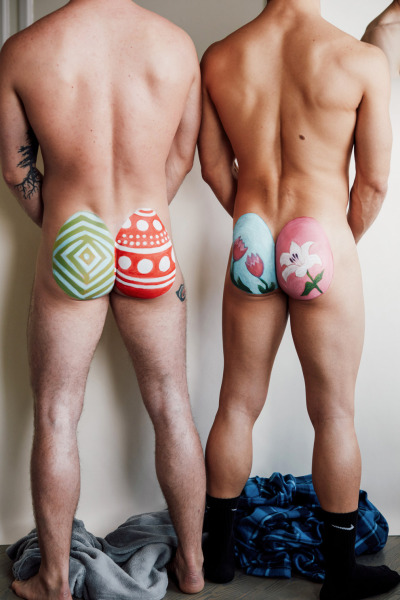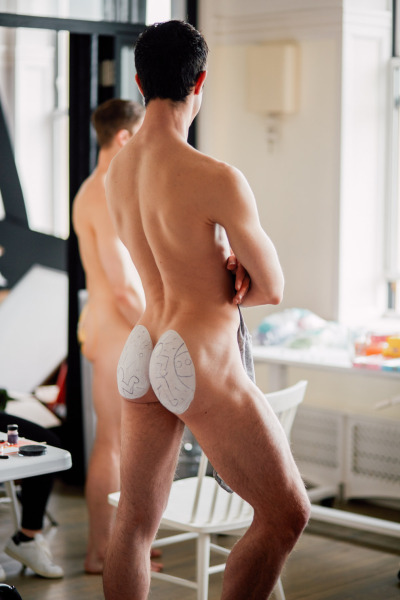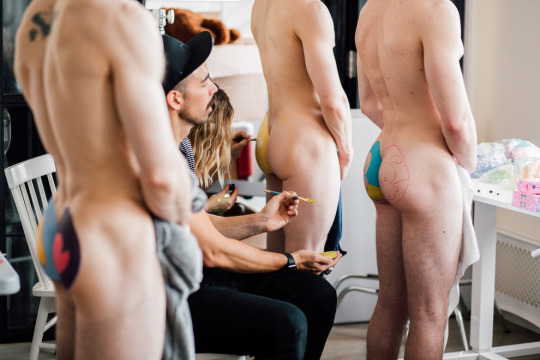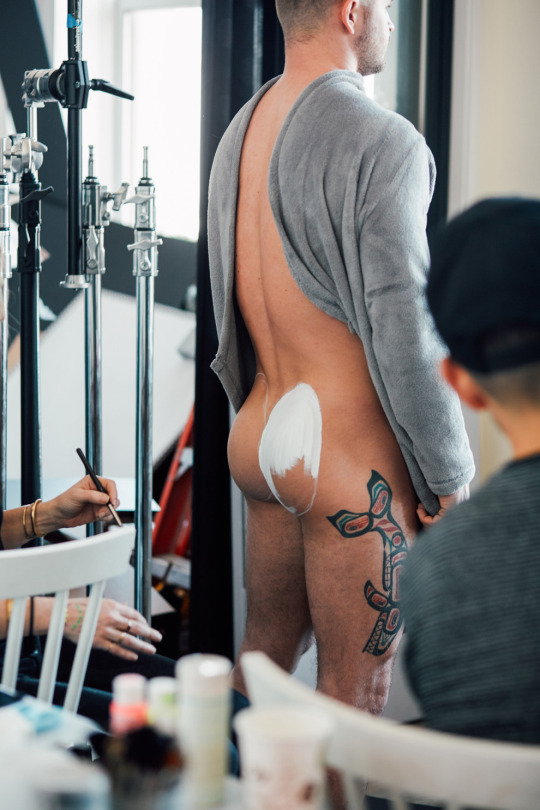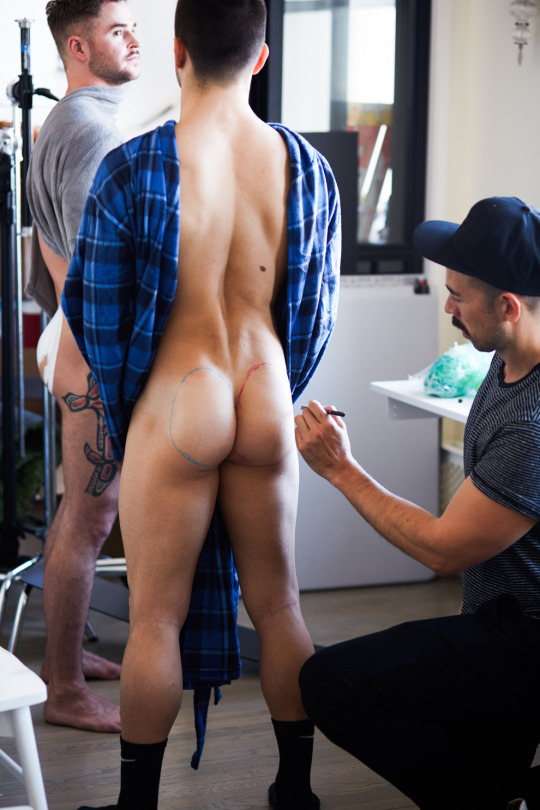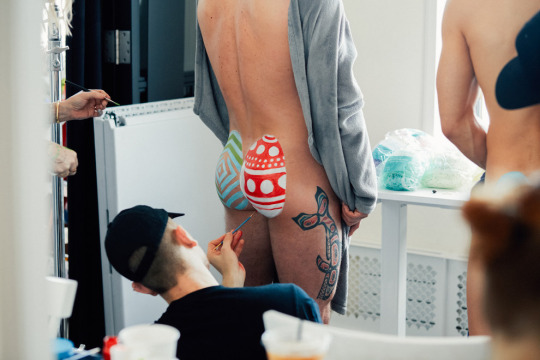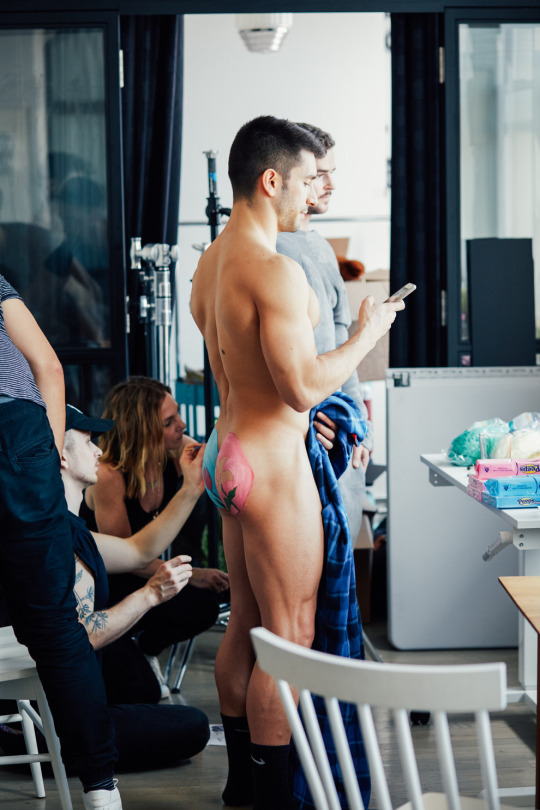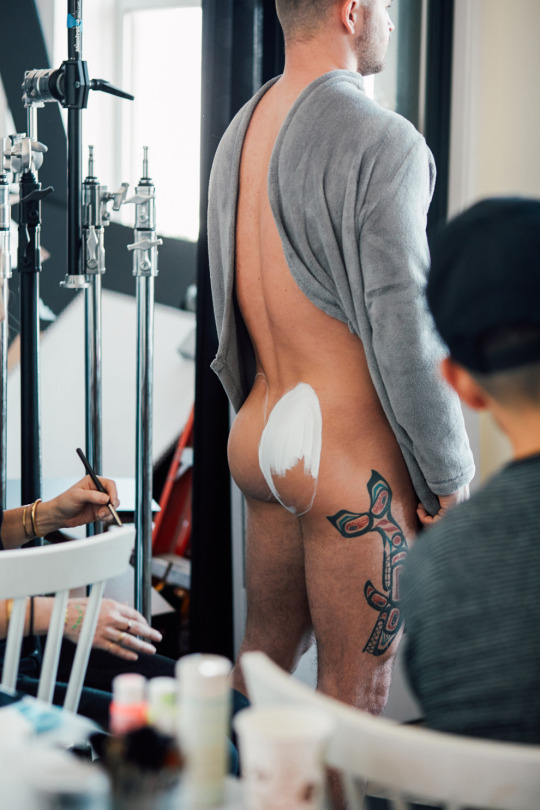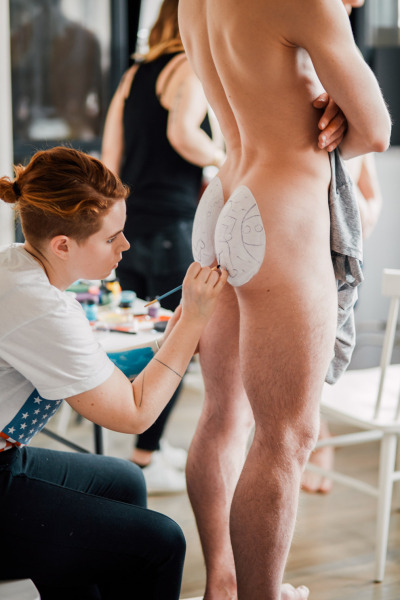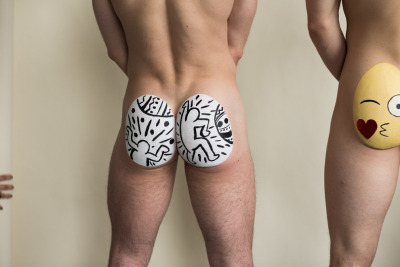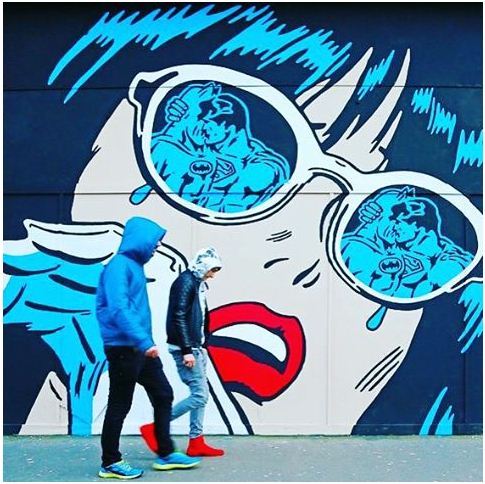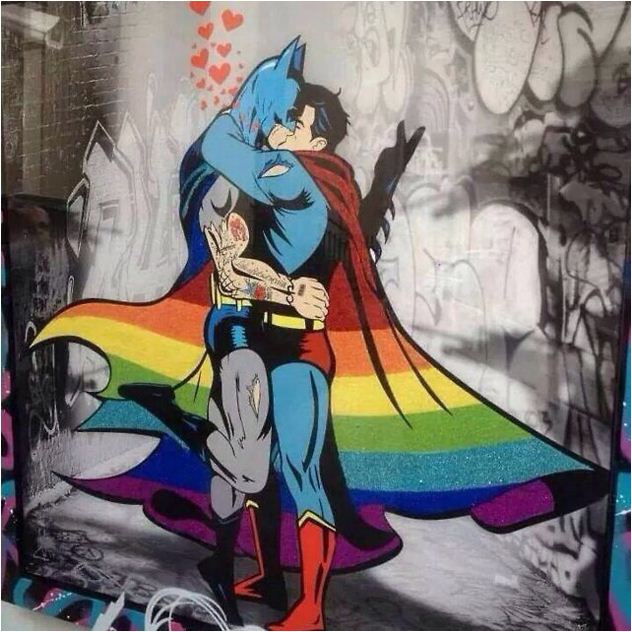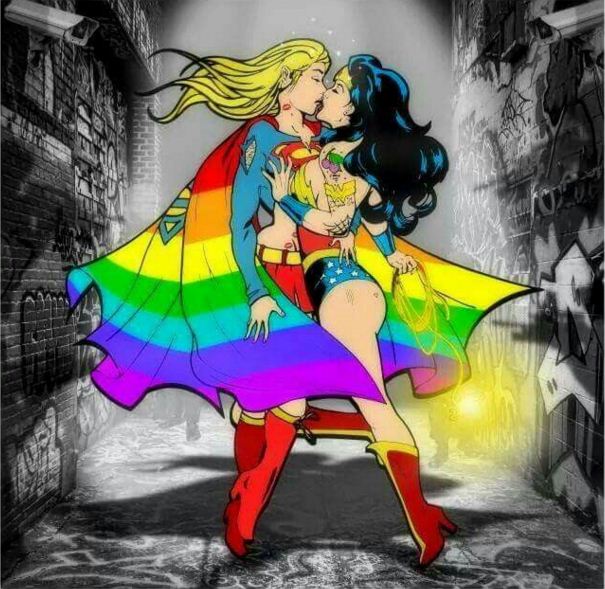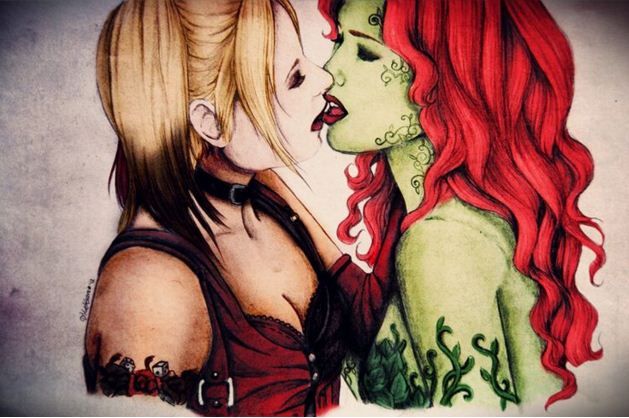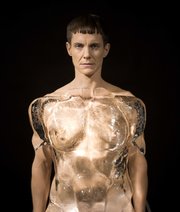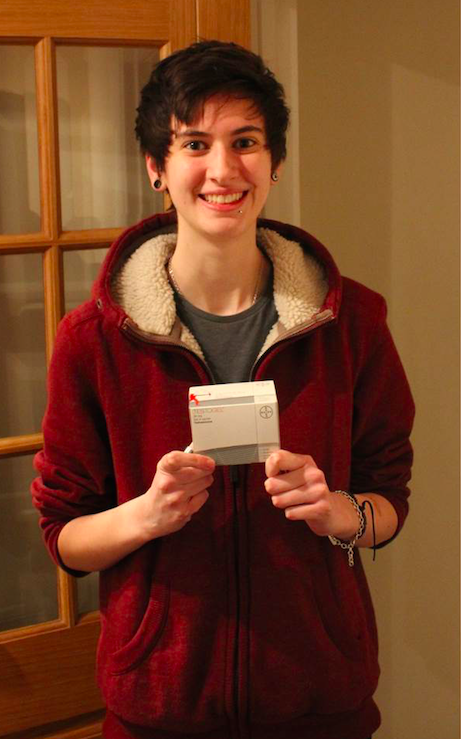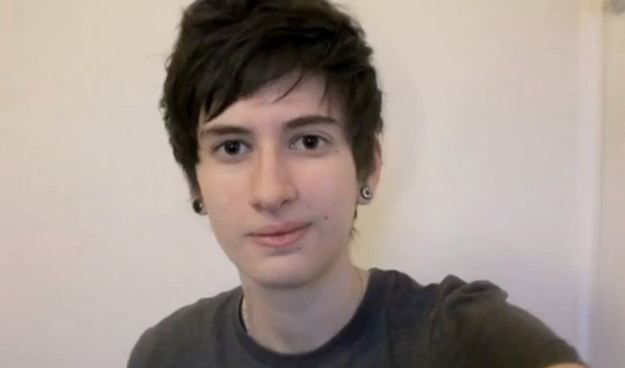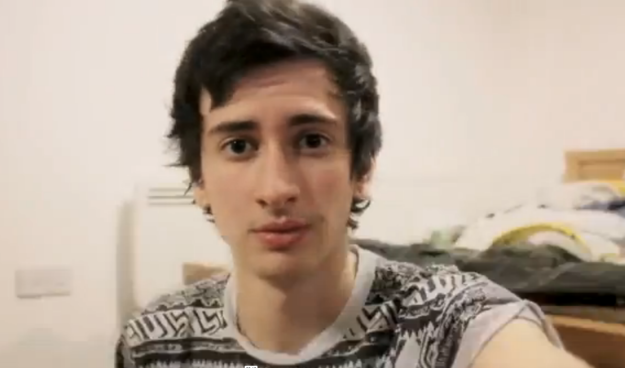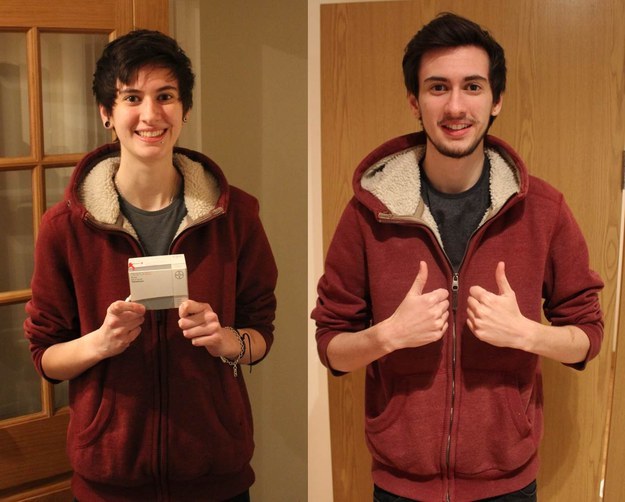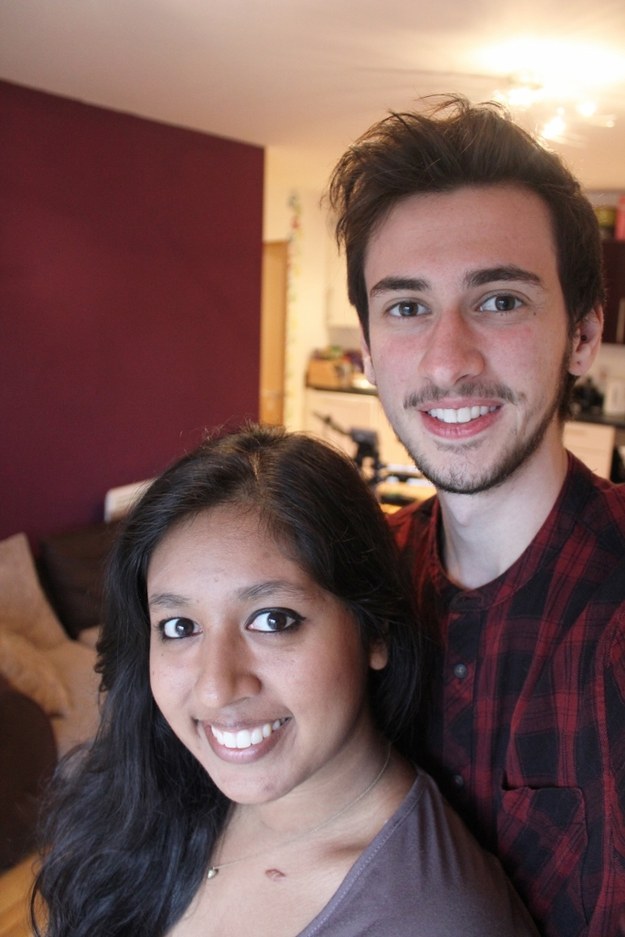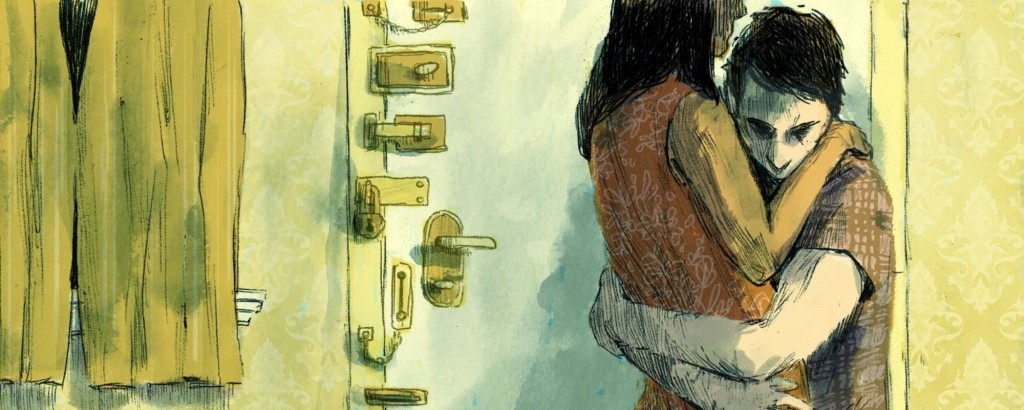
Matt didn’t know it was possible for a girl to have a dick before the model pictured in his Hustler-esque mag drew seven inches. She had slipped in unannounced between the magazine’s other, more typical spreads. His stroke quickened, sticking with sweat in his Brooklyn bedroom while a worrying thought knocked in his skull: Did it mean he was gay?
I met Matt in his home, thirty years after that fateful day in his teenage bedroom. (His name has been changed to maintain anonymity.) We sat on opposite ends of an ultra suede sofa, he in a pair of basketball shorts and a white t-shirt. Now in his late forties, Matt is a solid man, limbs thick from decades of manual labor. He’s safe now, free after years spent in anguish. “It made me mentally ill,” Matt said, his rough mouth blackened by 5 o’clock shadow.
In the 1980s, it was particularly daunting for a trans amorous man to confront his sexual identity. “The stigma that went along with being gay at that time in my youth was horrible,” Matt said. “There was nowhere to go, no LGBT Center. Most people when I grew up didn’t even have cable.” He felt he had a lot to lose—not the least of which was an attachment to his identity as a heterosexual man.
There are many men who share his fear. On Reddit, arguably the most revealing cultural sampler of our times, one trans amorous man recently aired his turmoil. He wrote about his relationship with a trans girl and his family and friends’ rejection of her. According to him, his loved ones mock him, ask if she’s got a dick, call him gay. “She is pre-op but I still only see her as a girl,” he wrote. On other boards, users ask straight men if they’d consider dating a trans woman. Some guys give a flat out no; others appear unburdened by social stigma, down for it so long as she passes well and is hot. But there’s another prevalent response, one that lands nearer to the heart of this issue. User kelevra206 wrote, “In a different society, I don’t think it would be an issue with me at all to be with a trans woman, but… with the way things are, I just couldn’t do it.”
Matt’s first sexual experience with a trans woman was in 1987, with a girl he picked up on the West Side Highway. This stretch of New York road runs parallel to the Hudson River, from the southern harbors of Manhattan to the Upper West Side. It used to be an infamous pickup spot for trans sex workers. Though Matt loved the sex itself, it wasn’t long after orgasm that he felt a throat-clenching sense of anxiety. “I was driving her back and I was so nervous, ‘Is someone going to see me?’ Absolute fear—HIV, Did I give myself HIV? I was so afraid [thinking of] how I’d tell anybody.”
It was the height of the AIDS epidemic. A disease that anybody could acquire had become a profound symbol of the cultural stigma against queer sexuality and sex. “There was no cure,” Matt said, shaking his head. “Instant death, you’re gone. We used condoms but I was more afraid of that conflict.” The internal conflict Matt felt between his identity as a straight man was even more frightening to him than the threat of acquiring HIV: The illness might have meant a tragic, untimely end to his life, but it also would have branded him a fag.
Matt said that he’s seen countless trans sex workers throughout his life. He was a John—or generic male client—for thirty years. Despite his insecurities, though, he always wanted more from those relationships. He tried to romance girls, but he was continually rejected.
It was the height of the AIDS epidemic. A disease that anybody could acquire had become a profound symbol of the cultural stigma against queer sexuality and sex. “There was no cure,” Matt said, shaking his head. “Instant death, you’re gone. We used condoms but I was more afraid of that conflict.” The internal conflict Matt felt between his identity as a straight man was even more frightening to him than the threat of acquiring HIV: The illness might have meant a tragic, untimely end to his life, but it also would have branded him a fag.
Matt said that he’s seen countless trans sex workers throughout his life. He was a John—or generic male client—for thirty years. Despite his insecurities, though, he always wanted more from those relationships. He tried to romance girls, but he was continually rejected.
When I asked Alex how important it is that a girl is able to pass well, he responded, “I’m attracted to femininity, not masculinity. It’s that simple.” People are entitled to their own tastes, but one wonders to what degree this extreme devotion to masculine or feminine ideals is a result of being inundated with hyper-gendered imagery in pop culture. Not to mention that holding trans women to a cisgender standard is unrealistic: The majority of trans girls will probably never pass perfectly. Clearly, having a boner for hot girls with dicks is far from synonymous with undoing the stigma against loving transgender women.
Later in his life, Matt has tried to give transgender women more—he’s tried to surpass the stigma surrounding his sexuality by being available emotionally and forging real relationships with trans women. About ten years ago, in his late thirties, he met a girl in the sex trade named Alicia. She’d come to New York from Brazil in the 80s—around the same time he’d been cruising the west side highway. “She’s the first trans woman I ever kissed in public,” Matt said. “We were walking down her block, and I was nervous: Is someone going to see me? I remember her saying to me, ‘I’m walking down the street with you, but if you’re going to be embarrassed by me, I’m going to be embarrassed by you.'” Then he kissed her. Matt smiled, gently shaking his head at the insecure man he’d once been.
Cristina Herrera heads the Gender Identity Project (GIP) at New York City’s LGBT Community Center. The GIP runs a variety of programs for the trans community; among other services, Herrera provides support groups. One group caters to partners of transgender individuals. It’s a place for anyone trans amorous to go and talk with other trans amorous men or women. “There is very little support for individuals who are partnering with trans people,” Herrera told me. “Society is harder on the men who date transgender individuals. There is a lot of stigma attached to it: Their sexuality is called into question”
“I knew a trans girl who told me that, with all the men she’s slept with, all the guys who have come through her doors, there’s no such thing as straight men,” Matt said. “I wonder sometimes, when I hear people spew hatred, how many of them have actually been with trans women before.”
Nearly all the men I’ve dated have identified as heterosexual. A handful have been bi, but none gay. Early on in my transition I frequently posted personal ads. There was a man who used to email me a couple times a week. He was a typical Williamsburg ruffian—tall, tattooed, with an undercut. He was a handsome guy, but I never met him because all he wanted was sex. I started seeing him around my neighborhood. He was always with his girlfriend. There they’d be slurping a Thai noodle lunch special, stocking a grocery cart with kombucha, or clouding their coffee with cream in our shared cafe. They held hands at their table. His cock-hungry messages lay close, stored in my phone at the bottom of my purse. I wondered if she knew he was cruising for sex with other people. Did she know he’s into trans women? When she finds out, will she ask him if he’s gay?
In his mid-thirties, Matt grew tired of denying himself the kind of life he’s always wanted. “I started seeing girls more often and just enjoying it, letting all the shame and guilt go and saying, ‘You know what? I have been doing this for so long anyway. This is something I’m gonna do for me.'”
He wanted Alicia to be more than someone he paid for sex, but there were multiple factors working against them both. Like many impoverished trans women, Alicia was addicted to drugs. She called Matt a few times desperate for cash. “I brought her a hundred dollars, and it wasn’t for sex. She looked horrible; she was thirty, forty, pounds lighter than she was when I’d first met her. It broke my heart.” He wanted to help, but couldn’t. It was too painful to watch Alicia’s descent into addiction, so Matt stopped seeing her and resumed living in secrecy. Six or seven years after he last saw Alicia, he attempted to find her again to no avail. She was gone, her online ads deleted.
Last year, after decades of living a double life, Matt was finally ready for a partner. He became serious about finding the right trans woman to spend his life with. But where to look? There’s been an active market for trans personal ads on Craigslist for years. Clicking into the m4t category of Misc. Romance, you’ll find reams of posts by trans amorous men. There is a weighty symbolism to Craigslist’s subcategories: Casual Encounters is, as one would expect, the most popular. If you’re cruising there, all bets are off. As the guys see it, social graces are checked at the door. Then, over in Misc. Romance, again and again, you’ll find posts by guys professing their exhaustion with Casual Encounters. They’ve had enough; they want more. There is a tenderness to the forum—the same users post diligently week after week in pursuit of their transgender soul mate, and stock photos of roses often accompany their ads.
With the rise of services like OkCupid, Craigslist and other trans community backchannels are becoming less necessary than they once were. In recent years OkCupid has integrated categories for transgender people. Matt made a throwaway profile on OkCupid just to see who was out there. “I checked the box for trans and the very first woman that came up was [Alicia],” he said. “I thought she had died. She even told me she wasn’t gonna live more than ten years.”
Alicia looked healthy. According to her profile, she had a job and was looking for a relationship. Judging by the smile in her photos, she was happy. In the years since they’d separated, she quit drugs and began working in advocacy for the transgender community. She remembered him and agreed to meet, but the wall she’d built remained intact. “I was still just a John to her, that’s all,” Matt said, disappointed. “I knew I was more than that. I want more and I can give more.”
It was hard to convince Alicia to let down her wall, but Matt understood why. “People can be assholes to trans women. It happens all the time. The looks, the stares, sometimes they say things. I remember our first date where we were together and it wasn’t for money and sex. It was a date. We were walking to downtown Brooklyn, to sit on the rocks under the Brooklyn Bridge.” She gave him the same speech she’d given ten years prior, before their first kiss. “She said, ‘If you’re going to be embarrassed by me, we can just go back to my apartment and you can pay me.’ I was so proud of myself. I held her hand, and walked down the street and we sat on the rocks and had a really romantic night. That was my first time not being afraid.”
A door across the room from us suddenly opened. Alicia passed through it, coming from the kitchen with a fresh plateful of empanadas. Matt grinned like a little kid. He tried to pull her onto the sofa but she refused, saying, “You two talk!” She laughed, swatting him away as she put her long hair in a clip. She was barefoot in a floor length, striped jersey summer dress. Eventually she gave in, and took a seat beside him.
Matt and Alicia share a “normal” life together. They’re both in their forties, they both work full time, and they both take care of their bodies. He loves her ambitious personality and sense of humor. Alicia told me it goes both ways. “I think every trans partner is as special as the trans woman they’re with,” she said.
“It doesn’t seem like there’s a lot of guys out here that do this,” Matt said. “We went to a bar; it was a trans event. One of Alicia’s friends told me, ‘You’re the only one. The only guy here.’ It’s rare, there are very few of us. I’d like to see more.” Matt briefly knew a guy who was dating a friend of Alicia’s. “He was younger than me and he was seeing this girl. She was mostly a bottom. But then I guess she topped him one time, which is a stigma in and of itself. He said to me, ‘Does that make me gay?’ and I said, ‘You know what? If it felt good and you’re making your partner happy, go for it. What the hell. Have fun, let it go.’ I think hearing that from me made a difference in his life.”
Alicia shook her head, laughing. “Does this make me gay?” She was asked that question countless times by men throughout her years in the sex trade. “If they were good, I’d tell them no, of course not. If they were bad I’d say, pretty much!”
Matt has progressively gained Alicia’s trust. “Getting our own place together was really important,” he said, encircling her in his arms. Sharing their home was a big step for both of them, and Matt saw it as crucial to showing his sincerity.
“To tell you the truth, sitting here talking to you about, I’m kind of embarrassed. I should be proudly sharing her in every part of my life,” he said, referring to his colleagues and family, two groups with which he’s yet to break that seal of secrecy. It may not be safe to—Matt’s colleagues say hateful things about trans women. “‘Not human.’ ‘Should be executed.’ Nasty stuff. Alicia’s told me not to stick my neck out at work, but a couple of times I said, ‘You know what, I bet that person who has been conflicted their whole lives, and has probably suffered their whole life, is finally free.” Matt thinks that if they ever found out, the consequences could be tragic. “You’d read about me in the paper, unfortunately.”
As Cristina Herrera sees it, guys like Matt have the cards stacked against them. The cultural stigma against loving trans women is deeply ingrained into our society to the point of ubiquity. “There is a lot of bullying going on,” Herrera said. “Public figures that have been discovered having sexual relations with trans women have paid a heavy price.” Herrera said these public shamings “hurt the whole process. It makes other men much more nervous. They know it could happen to them, that their friends or colleagues might treat them the same way if they knew.”
We try awfully hard to bend ourselves around language, but even the people who feel best represented with words like “straight” don’t fit all the criteria. One of the central issues to identity politics, and the LGBT string of labels, is the idea that people whose sexuality or gender differ from a heteronormative standard are inherently different, where those whose gender or sexuality conform to it are not. Rather than trying to normalize queer people, we could recognize that no one is normal. Straight, cisgender people are different too. Alicia alluded to it when she said that every trans partner is as special as the trans person they’re with.
I asked Matt what he thought it would take to change society, to bring his trans amorous brethren out from the shadows. “The more of us that are out there,” he said. “The more men who walk down the street holding a trans woman’s hand. It’ll show other men, give them their courage to say, ‘I like that too, and I’m not afraid.'”
